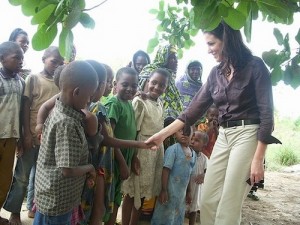
For many years Hebrew schools in North America barely related to the Jewish holiday of Tu B’shevat, New Year for the Trees. When I was growing up, in the ’60s, there was a buffet table set up in the hallway of our Hebrew school in mid-winter with carob pods (bokser) from Israel, some nuts and dried fruits and a hand-out that vaguely alluded to the “holiday of the trees.”
In addition, we contributed toward the planting of Jewish National Fund trees in Israel. If we thought about it at all, we might have imagined a bunch of Israeli trees swaying happily in the Mediterranean breezes, but in reality, the content of the holiday was distant.
More recently, Tu B’shevat has become the rallying cry for Jewish environmentalists who have used the holiday to raise awareness of ecology, the environment and the responsibility of the Jewish community — as a society which has always valued the earth that God gave us — to spearhead the drive towards a more activist approach to environmental responsibility.
Last year I taught an online class to a group of 7th graders in Deerfield Illinois via an online Jewish/Israel education project, JETS Israel. As Tu B’Shevat approached, I decided to use distance learning to make the content of Tu B’Shevat more imminent for my students.
As part of my six-week Tikkun Olam course, I introduced the holiday of Tu B’shevat as a conduit to the value of Tikkun Olam as seen through Israeli agriculture and the observance of ancient laws that have been reinstituted in the modern State of Israel after centuries of disuse.
We started out by looking at the sharing of resources through the law of Maaser (tithing): “Every year, you shall set aside a tenth part of the yield, so that you may learn to revere your God forever.”
I posted the text on the online bulletin board as a way of introducing the connection between Tu B’shevat and Tikkun Olam. The students were asked to relate to different questions that the concept of ma’aser (tithing) brings up.
• Is ma’aser a concept that is still applicable in today’s world?
• Was it easier for people in the “olden days” to give ma’aser than it is today? Why?
• Do you know anyone who gives ma’aser? Can you tell us a little about the person and which causes s/he gives to?
These questions were posted on a linoboard and students clicked on “sticky notes” to drag the note to the question and answer, based on their knowledge, experiences and feelings.
We introduced the question of “why is giving ma’aser, or any charity, an important Jewish value?” The students watched a video about the importance of charity which served as a jumping off point for them to discuss charity in their lives and in their community.
Then, using a Mindmeister board we created a mindmap of the different types of charities that the students felt that they would want to support. Each student was asked to select a Jewish charity, describe its mission and explain the reasons that s/he thought that it would be an important tzdekka to support.
The half-hour class didn’t provide me with enough time to delve as deeply into the subject as I would have liked. However, the kids thoroughly enjoyed the lesson and, their teacher told me, spoke about it among themselves afterward.
Sitting in my home in Israel (3:00 am my time!), I was able to give the students an experience of the Israel-based aspects of Tu B’Shevat that were lost on me when I was a student. In addition the kids participated on their individual laptops, giving each student the opportunity to chat in questions and answers, post on google docs and online bulletin boards and stay involved and engaged in the entire lesson. In an online learning classroom all of the students stay engaged throughout the lesson. A student can’t zone out while someone else is taking “his turn” because it’s always everyone’s turn.
The students are constantly being asked to comment, respond, think, create and produce which gives no one any time for daydreaming.
Increasingly day schools and afternoon schools are including e-learning techniques in their curriculum as a means of broadening the students’ learning experience, expanding their learning community, and enhancing student engagement. enable the students to engage
The 2014 class begins this week which coincides with Tu B’Shevat. I am looking forward to using my “classroom without borders” to enable my new students to experience Tu B’Shevat in Israel.
Laurie Rappeport lives in Safed, Israel. She teaches about Judaism and Israel for an online education concern and researches American Jewish music traditions, including traditions of the Tu B’Shevat holiday, for the Milken Archives.
George Muresan / Shutterstock.com



